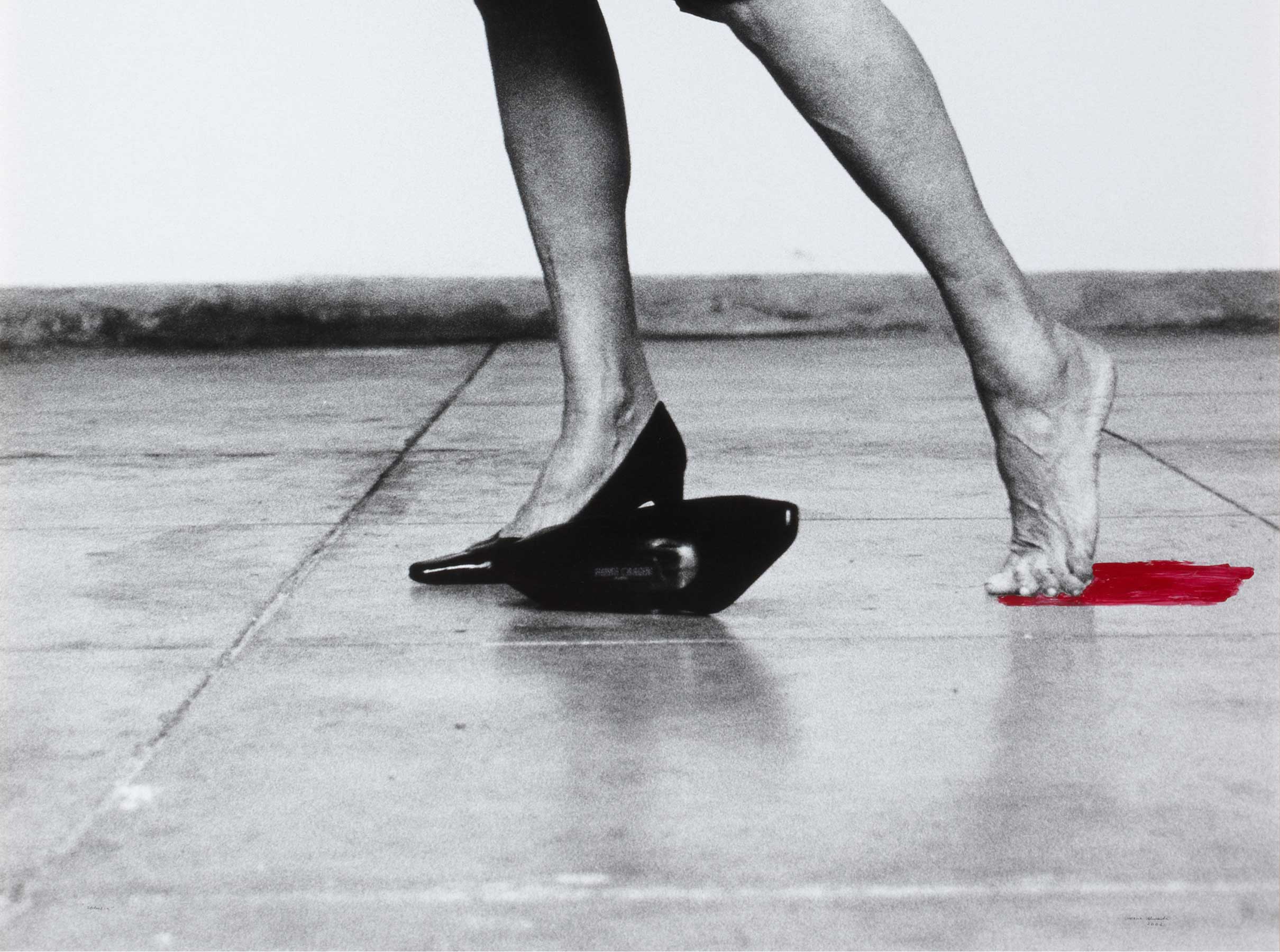In the context of the return to painting of the 1980s, and as a means of gauging himself against the past through a personal renewal of the pictorial language, Miguel Ángel Campano sought inspiration in the works of master painters. Several of the works in the Banco de España Collection reflect that moment of retreating and advancing in that decade and the artist’s extraordinary fruitful sojourn in Paris. This is the case of The Musician and the Model V (1983) and La Grappa XI (1986), both based on works by the painter of the French classist school Nicolas Poussin. The first of those works, Country Concerto, may have been inspired by Numa Pompilius and the Nymph Egeria (1631-1633, Condé de Chantilly Museum), where a woman in an identical position is entertained by a musician, in this case a flautist rather than the viola da gamba performer preferred by Campano, and The Great Bacchanal with a Lute Player (1627-1628, Louvre). More interested in Poussin’s mechanisms of composition than the theme of these works, in The Musician and The Model V Campano again uses part of the vocabulary of signs of one of his best-known series, Vowels, produced in the late 1970s and early 1980s; a language that is even clearer in the watercolour Untitled (1982), where the loose scripts seem to be trying to create a scene. This personal grammar was his short-lived departure from abstraction in pursuit of an examination of the past; The Musician and The Model V, painted at the same time as Vowels, could be said to reflect a certain restructuring of what were previously freer and more scattered shapes to form a more recognisable scene, in a line that he was to develop more fully from that moment onwards.
As part of that same approach to the pictorial tradition, in the mid-1980s, Campano embarked on one of his central series: La Grappa. Once again, he based himself on a work by Poussin, in this case Autumn, also known as The Grapes of Canaan or The Spies with the Grapes of the Promised Land, from the Four Seasons series (1660-1664, Louvre), which depicts the passage from the Old Testament in which on Moses’ orders, a group of Israelites steal a colossal bunch of grapes to feed their people. Campano had already set his sights on Poussin’s series, to which he obsessively returned from the earlier The Flood (1982, Pompidou Centre). He saw this as a foothold from which to embark on pictorial experiments from the example of Poussin as an early liberator of the landscape genre from the constrictions of a theme that, treated as pastoral scenes, is secondary to the pantheism that reveals the exuberant nature. The work by Poussin, considered to be his artistic testament and painted when he was suffering a condition in his hands that prevented him from working with precision, also provided Campano with an uncharacteristically free and unsteady model which from our perspective appears closer to modern sensitivities.
Compared to earlier versions of the same theme, La Grappa XI retains the main lines of the reference composition, which Campano studied in detail, but to which he applied dozens of formal and structural variations. The scene is veiled by a large mass of colour, a type of dense atmosphere of yellow and green tones that seem to give the work its primal landscape quality and turns the characters and narrative into an anecdote contrasting with a pantheistic view of nature. Comparing La Grappa XI to versions such as the immediately proceeding La Grappa VIII, (ICO Foundation Collection) and other subsequent works (e.g. La Grappa XXXVIII, ”la Caixa” Contemporary Art Collection), all three of which date from the same year, we see how Poussin’s motif became a formal laboratory for Campano during his most fertile period, when he was trying to break free from painting with precise, controlled strokes, paradoxically under the aegis of the French artist who represents the forging of the preceptive conditions of academicism. The Banco de España also owns one of the sketches for some of the many versions of La Grappa, in oil on paper, also from 1986, in which one can also see the compositional structure captured in a few strokes, with the characters carrying the bunch of grapes and a very rough outline of the landscape, reminiscent of the more openly abstract and stripped-down versions of the same scene based on Poussin’s composition.
Other works by Miguel Ángel Campano

